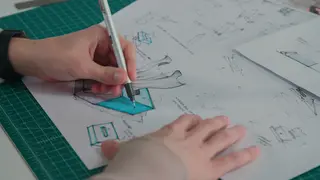
Origami, the ancient Japanese practice of folding paper, is more than just a visual artform, inspiring mindfulness and meditation. That’s right, it turns out, it is also a modern practice inspiring the minds of scientists and engineers to think outside the box.
John Varrasi, writing for Live Science, explains, “origami is inspiring engineers to design active materials and smart structures that bend, stretch and curve, overcoming traditional design constraints.” And it all starts with paper. Beginning with paper prototypes, engineers and scientists are making a huge impact in several areas of scientific study. They are able to build upon the paper prototypes by translating them to other materials.
So today, on Origami Day, let’s look at some of the ways this ancient paper art is impacting modern science:
- According to Phys.org, Robert Salazar, an intern at NASA’s Jet Propulsion Lab, helped to design the Starshade, an “immense, folding iris that has been proposed as a way to block light from distant stars.” Salazar’s extensive background in origami - he has been making traditional origami for more 17 years – was originally inspired by the children’s book Sadako and the Thousand Paper Cranes.
- At the University of Notre Dame, Ashely P. Thrall, the Myron and Rosemary Noble Assistant Professor of structural engineering, worked with the US Army to develop “origami inspired” shelters that have both military and humanitarian applications. According to Kate Parker, writing for the university’s College of Engineering, “after experimenting with numerous origami paper models, Thrall and her team came up with a unique origami shelter combined with a novel lever system to easily lift and erect the origami structure.”
- According to Medium, origami engineering may even be the key to sending a manned mission to Mars. How? Just the immense size of the equipment needed, such as solar panel arrays, is so massive that a single rocket could not possibly fit the number and size required. But “using the principles of origami and a mixture of different styles of folds, a new type of origami-inspired solar array was created.”
- According to Linda Poon, writing for CityLab, researchers at Georgia Tech, the University of Illinois and the University of Tokyo, building prototypes out of paper, came up with an “origami inspired structural-support configuration called ‘zipper tubes’, long tubes with zig zag creases.” The zipper pattern is “based on an origami technique called Miura-ori folding, in which a sheet of paper is folded into a compact square in such a way that it can be opened and closed in one swift motion.” These tubes will allow materials that deploy into a “large functional 3D structure” can be stowed in a very compact space.
So, while most people think of origami as an ancient art of making paper cranes, science sees the immense potential in the still modern practice of folding paper.



